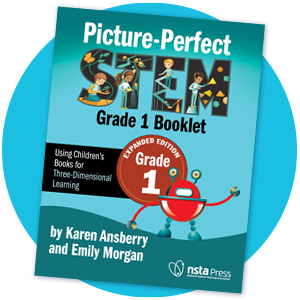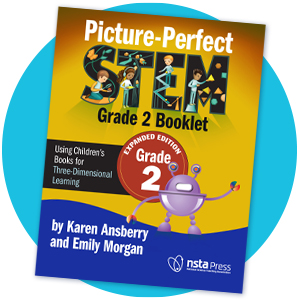Picture-Perfect STEM Lesson Plans ClassPacks
Equip your students for exploration, engaging STEM learning experiences await!
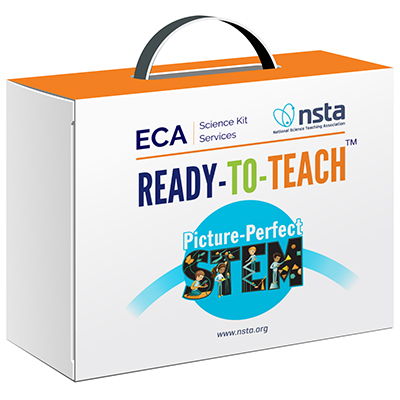
Are you looking for a way to incorporate hands-on science into your existing elementary science curriculum? Picture-Perfect STEM Lesson Plans ClassPacks include all the materials needed to complete the teacher-friendly lessons featured in the acclaimed NSTA Press series, Picture-Perfect STEM.
Ready-to-Teach™
Each carefully curated ClassPack comes with everything needed to complete the lesson. No prep or lab equipment required! Delivered in the ECA Science Kit Services Ready-to-Teach™ model.
Cost Effective
ClassPacks are sold individually, so you can buy just what you need.
Time Saver
Your class will be more organized in less time with ClassPacks created especially for your needs.
Equitable STEM Learning
Each kit consists of high-quality materials that support standards-based, equitable STEM learning.
Interested In ClassPacks?
Contact Sandy Lijewski at Textbook Support for more details.
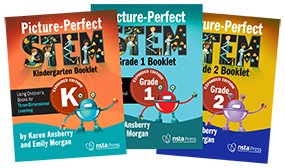
Lessons Supported by Classpacks
Kindergarten
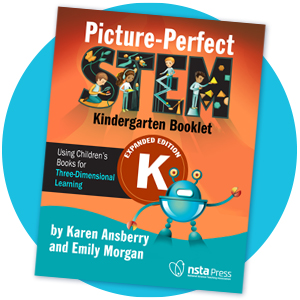
The Handiest Things
Students explore the idea that a variety of technologies—from chopsticks to calculators—solve problems in our everyday lives. They learn that all technologies have various parts that work together to solve a problem, and then they brainstorm some new parts to improve an invention they use every day—a backpack.
Move It!
Students explore the phenomena of a toy car on a ramp speeding up, slowing down, and stopping. They read a nonfiction book about forces and explore how pushes and pulls can change motion. Then, they apply their knowledge to complete a design challenge: getting a toy dog (named Newton) into his doghouse!
Design a Habitat
After reading a picture book about a boy who is begging his mom for a pet iguana, students explore the phenomenon of different kinds of animals living in different places on Earth. They learn about the needs of living things and the diverse habitats that meet those needs. Engineering design comes into play when students apply their knowledge about the needs of animals by designing and building a model habitat for an imaginary pet of their own.
Feel the Heat
Students explore the phenomenon of temperature difference between sun and shade on a surface on the school grounds. They carry out an investigation of temperatures of surfaces around their school in the sun and in the shade to see if shady surfaces are cooler than surfaces that are in the sun. Then, they design, build, and test physical models of shade structures that could provide a place to stay cool on the playground.
Do You Know Which Ones Will Grow?
Learners explore the phenomenon that some things grow (like people, cats, and snakes) and other things do not grow (like chairs, hats, and cakes). They learn the difference between living and nonliving things and what living things need to survive.
Soccer Science
Students explore the phenomenon of how soccer players get a soccer ball to go where they want it to go. They read a nonfiction book about motion and observe and describe patterns of forces and motion (e.g., the harder you kick, the faster the ball goes). Then, they apply their understandings about forces and motion to design a game that uses pushes and pulls.
Be a Friend to Trees
Learners explore the phenomenon that many things they use every day come from trees. They learn the importance of trees as sources of food, shelter, and oxygen for people and animals, and ways to conserve trees.
You may also be interested in
About Our Partners
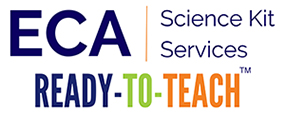
ECA Science Kit Services is a unique service that offers kit management, replenishment, and kit fulfillment services in their signature Ready-to-TeachTM style. ECA’s services makes using science kits easy for teachers and cost-effective for school districts. Their Ready-to-TeachTM kits arrive complete and prepped for teachers, to ensure that both teachers and students have a successful experience in the classroom. We are proud to be partnering with ECA Science Kit Services for the NSTA Picture Perfect Ready-to-TeachTM kits!
Want to learn more about ECA’s Ready-to-TeachTM style of kitting? Here’s the cup that started it all!


